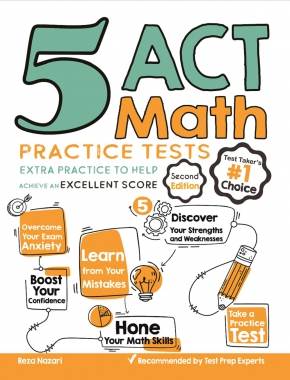Six Hacks for ACT Math: Top Clues, Tricks, and Tactics

- Long word problems,
- Series/ Sequences problems
- Problems in which you need to figure out the “patterns”
- Problems that do not seem to make sense when you first look at them as well as those you have no idea how to resolve.
#6: Use Educated Guessing Method
This method is relevant to problems that you comprehend somewhat but can’t solve via straightforward math. With these, attempt to sort out all the choices for answers as you can before choosing the answer. Whenever you do not have a single clue regarding what a particular problem involves, do not waste time attempting to get rid of the possible choices for an answer. Merely pick one at random and move on to the following question.
As you can ascertain, direct solutions are the best approach. Carefully read each question, decide which solution uses the math you’ve learned before, then organize that answer by picking one of the possible choices. Are you stumped? Make the best guess, and then go to the next one.
Do not leave any of the fields empty! No matter if you can’t figure a problem out, try to do so. Guess if you must. You won’t lose any points if the answer is wrong, but if you get it right you could gain some points.
College Entrance Tests
The Best Books to Ace the ACT Math Test
More from Effortless Math for ACT Test …
Are you looking for a FREE ACT Math course to help you prepare for your test?
Check out our Ultimate ACT Math Course.
Need Math worksheets to help you measure your exam readiness for your upcoming ACT test?
Have a look at our comprehensive ACT Math Worksheets to help you practice and prepare for the ACT Math test.
Want to review the most common ACT Math formula?
Here is our complete list of ACT Math formulas.
Looking for FREE ACT Math websites to find free online resources?
Here is our complete list of Top 10 Free Websites for ACT Math Preparation.
Need a practice test to help you improve your ACT Math score?
Have a look at our Full-Length ACT Math Practice Test and Free ACT Math Practice Test.
Do you know the key differences between SAT Math and ACT Math?
Find your answer here: SAT Math vs. ACT Math: the key differences.
The Perfect Prep Books for the ACT Math Test
Have any questions about the ACT Test?
Write your questions about the ACT or any other topics below, and we’ll reply!
Related to This Article
More math articles
- 5th Grade Georgia Milestones Assessment System Math FREE Sample Practice Questions
- How to Add and Subtract Complex Numbers? (+FREE Worksheet!)
- ACT Math FREE Sample Practice Questions
- How to Graph the Cotangent Function?
- How to Graph Transformation on the Coordinate Plane: Dilation?
- The Wonderful World of the Triangle Inequality Theorem
- How to Write Linear Equations From Y-Intercept and A Slope
- FREE 4th Grade SBAC Math Practice Test
- 7th Grade Scantron Math Worksheets: FREE & Printable
- 7th Grade NYSE Math Practice Test Questions


















What people say about "Six Hacks for ACT Math: Top Clues, Tricks, and Tactics - Effortless Math: We Help Students Learn to LOVE Mathematics"?
No one replied yet.